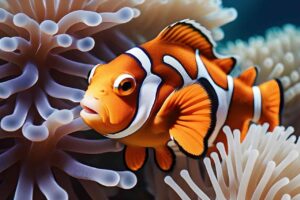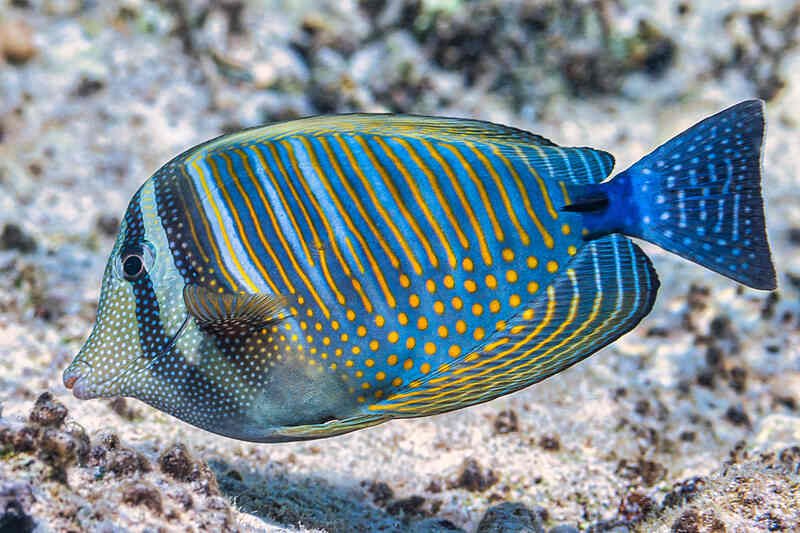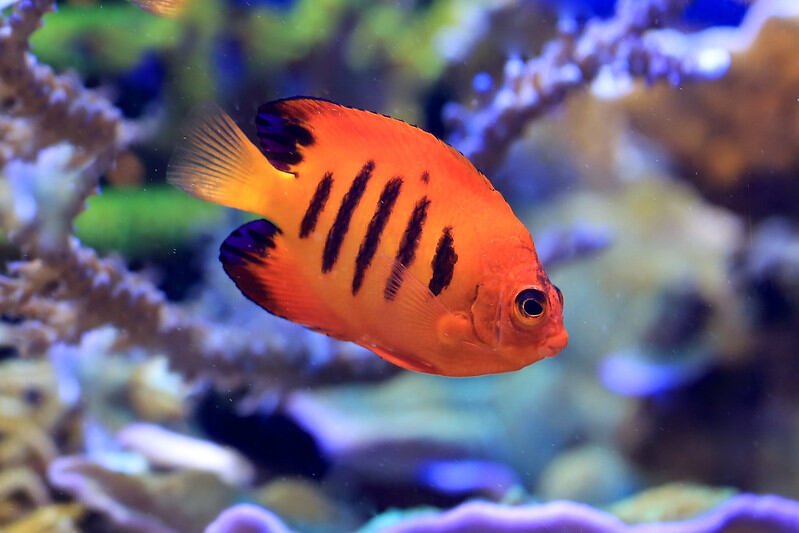When I first decided to venture into the world of saltwater aquariums, I wanted something both beautiful and manageable. After weeks of research, I came across the Pink Skunk. These vibrant, unique fish captured my attention not just for their striking appearance but also for their fascinating behaviors. Over the years, I’ve gathered a lot of knowledge and personal experience with these fish, and in this article, I’ll share everything I’ve learned. Whether you’re a seasoned aquarist or a beginner, here’s a complete guide to keeping and caring for the Pink Skunk.
Introduction to Pink Skunk Clownfish
The Pink Skunk (Amphiprion perideraion) is a part of the clownfish family, but unlike the typical orange and black coloration you often see in clownfish, this species has a light pink hue with a distinctive white stripe running down its back. They are native to the Indo-Pacific region, and like many clownfish species, they have a symbiotic relationship with anemones, which helps provide protection in the wild.
I chose the Pink Skunk Clownfish primarily for its peaceful nature. Compared to other clownfish, they tend to be less aggressive, making them an excellent choice for community tanks. Their soft, pastel coloring adds a subtle beauty to any aquarium. Plus, their interactions with anemones create an intriguing dynamic in the tank.
Tank Requirements for Pink Skunk Clownfish
- Tank Size
When I first started out, I kept my Pink Skunk in a 30-gallon tank. I would recommend this as a minimum, especially if you plan on adding other fish. These clownfish are relatively small, usually growing up to 4 inches, but they need ample space to swim and explore. If you want to keep a pair or add other species, a 40-gallon tank or larger would be more appropriate. - Water Parameters
Getting the water parameters right was one of the biggest challenges I faced when keeping a Pink Skunk. They are hardy fish, but they do best in stable conditions. Aim for the following parameters:
- Temperature: 75-82°F (24-28°C)
- pH: 8.0-8.4
- Salinity: 1.020-1.025 SG (Specific Gravity)
- Ammonia, Nitrite, Nitrate Levels: Ammonia and nitrites should be at 0, and nitrates should be kept under 20 ppm.
Maintaining these parameters wasn’t too difficult after I got the hang of it, but I learned that consistency is key. Regular water changes and testing are crucial to keeping the environment healthy for these fish.
- Tank Setup
I found that Pink Skunk thrive when given plenty of hiding spots. Live rock works well, not only providing hiding places but also fostering beneficial bacteria. I also recommend adding an anemone to the tank. I introduced a bubble-tip anemone into my setup, and my Pink Skunks quickly formed a bond with it. Watching them nestle into the anemone was one of the most rewarding parts of keeping these fish.
While anemones are not necessary, they help recreate the natural environment for clownfish. Just be mindful of the care requirements of anemones, as they can be more demanding than the fish themselves.
Feeding Pink Skunk Clownfish
Feeding my Pink Skunk was one of the easiest aspects of keeping them. They are omnivores and will accept a variety of food. I typically fed mine a mix of:
- Frozen Mysis Shrimp
- Brine Shrimp
- Marine Pellets
- Flake Food
- Seaweed Sheets (occasionally)
I found that feeding them twice a day kept them active and healthy. One important thing I learned was to avoid overfeeding, as this can lead to poor water quality, which will harm your fish over time.
Breeding Skunk Clownfish
One of the most exciting experiences I had was when my Pink Skunk began to breed. If you’re patient, it’s entirely possible to breed these fish in captivity. Here’s how it worked for me:
- Pairing the Fish
It’s essential to have a bonded pair. When I first introduced my Pink Skunks, I noticed that the larger one naturally became the female, and the smaller one became the male. This is typical behavior for clownfish since they are protandrous hermaphrodites, meaning they start as males and can switch to females if needed. - Breeding Conditions
To encourage breeding, I focused on maintaining excellent water quality, stable temperatures, and providing plenty of nutritious food. I also added a flat surface near the anemone for them to lay their eggs. After a few months, I noticed the female starting to clean a spot on the rock, signaling that breeding was imminent. - Egg Laying and Fry Care
The female laid eggs, and both parents took turns guarding and fanning them. The eggs hatched in about 6-10 days, depending on the water temperature. Raising the fry was another challenge altogether. The fry are tiny and need specialized care. I set up a separate rearing tank and fed them rotifers and other micro foods. Out of a batch of about 200 eggs, I managed to raise around 20 fry to maturity.
Breeding Skunk Clownfish is incredibly rewarding, but it requires dedication and patience. It’s a process I would recommend only if you’re willing to invest the time and resources.
Compatibility with Other Fish
One of the things I love most about the Skunk Clownfish is their peaceful temperament. In my experience, they coexisted well with other non-aggressive species like gobies, blennies, and certain tangs. However, I did notice that they became slightly territorial around their anemone, particularly when other fish came too close. It wasn’t aggression so much as gentle nudging to protect their territory.
If you’re keeping multiple clownfish species in the same tank, be cautious. Clownfish can become territorial, especially as they mature, and mixing different types can lead to conflict. I learned this the hard way when I introduced a pair of Ocellaris Clownfish into the same tank, only to see tension rise between the two species. Eventually, I had to separate them into different tanks to maintain harmony.
Common Health Issues and Solutions
Throughout my time keeping skunk clownfish, I encountered a few health problems, but fortunately, most were manageable with proper care. Here are some common issues and how I addressed them:
- Marine Ich (Cryptocaryon irritans)
Marine ich is a common problem in saltwater aquariums. I noticed white spots on one of my clownfish, which is a clear indicator of ich. I immediately quarantined the affected fish and treated the tank with copper medication. To prevent future outbreaks, I always quarantine new additions for at least two weeks before introducing them to the main tank. - Fungal Infections
Another issue I encountered was a fungal infection, which appeared as cotton-like growths on the fish’s body. I treated this by performing water changes and using antifungal medications. Keeping the tank clean and the water quality high helped prevent future infections. - Stress
Stress in Pink Skunk Clownfish can be caused by poor water conditions or aggressive tank mates. I always made sure to monitor the fish’s behavior closely, and if I noticed any signs of stress—such as rapid breathing or hiding for long periods—I would check the water parameters and remove any potential stressors. Regular tank maintenance goes a long way in preventing stress.
Final Thoughts
The Skunk Clownfish has been one of the most rewarding species I’ve ever kept in my aquarium. Their peaceful nature, combined with their vibrant coloring and interesting behavior, makes them an excellent choice for both beginners and experienced aquarists. From selecting the right tank setup to feeding and even breeding, I’ve learned so much from my time with these fish.
If you’re considering adding Pink Skunk Clownfish to your aquarium, I can confidently say they’re a fantastic addition. With the right care and environment, you’ll find them to be both beautiful and engaging companions in your saltwater world. As always, consistency in care and attention to detail are key to ensuring these fish thrive. Enjoy your journey with these lovely creatures!




